That’s how historic air battles get botched by Hollywood
Time and again the ignorance and nonchalance with which even highly renowned directors simply ignore historic details is fascinating. They do this in spite of the fact that it should easily be possible to gain competent information and, with a minimum of historical diligence, to also correctly incorporate those resulting consolidated findings in the movie.
In this respect a rather positive example of this genre is the legendary movie “Battle of Britain” by director Guy Hamilton, released in the year 1969. This cine film, however, was produced under the guidance of no less a supervisor than Adolf Galland, former Luftwaffe Inspector General of Fighters. It seems that this fact not only lastingly resulted in a correct description of the historical events as such but also had a beneficial effect with regard to the attention to detail.
»Battle of Britain«
Director: Guy Hamilton, published in 1969
At that time today’s trick technology did not exist. Furthermore, by then there were no surviving, airworthy Messerschmitt Bf 109s type E available after the war as they were in use during the year 1940 at the time of the Battle of Britain. Therefore, Guy Hamilton had no other option but to rely on Spanish HA-1112-M1L “Buchon”s. Those were still airworthy and had been built under licence by the Spanish Air Force after the war. They had originally been true Messerschmitt Bf 109s, but in the meantime there was an optical catch. As the Spanish Air Force could no longer rely on German replacement parts for the original Daimler-Benz aircraft engines, after Germany’s surrender in May 1945 and the collapse of the entire German arms industry, they consequently equipped their Messerschmitt Bf 109s with British Rolls-Royce-Merlin engines. Those engines provided the Supermarine Spitfire with its characteristic frontal belly. But this belly now turned the originally perfectly sleek “Me 109” into what many German fighter pilots regarded as a disfigured “teratism”. My father, who had personally flown the “Me 109”, upon seeing a “Buchon” on the occasion of an air show immediately turned for home and left the air strip, stating in disgust: “this is anything but a Me 109!”. Of course he was right.
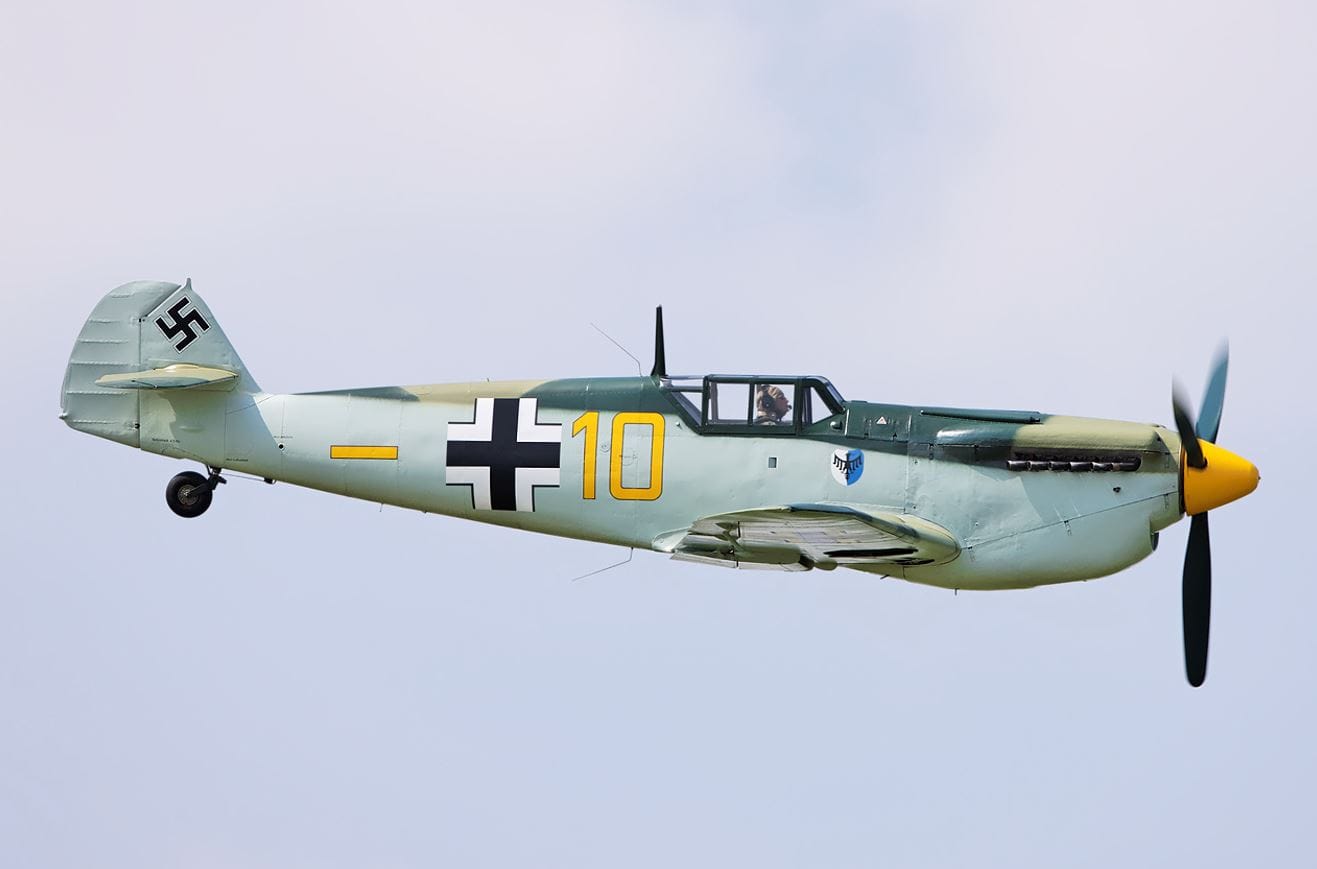
The fighter aircraft depicted in the movie “Battle of Britain” as “Me 109s” therefore had a drastically changed aircraft nose, which did not in any way correspond to the original Messerschmitt Bf 109 E. Another change was the four-blade propeller, while the original Messerschmitt Bf 109s used a three-blade propeller as well as the Supermarine Spitfire Mk.Is which were flown in combat during the Battle of Britain. Although during the movie air battle scenes Spitfires as well as Ha-1112s were used in historical terms with incorrect four-blade propellers–a fact which of course is hardly recognisable due to the rotation of the prop–Guy Hamilton’s film team nevertheless still made the effort to change this detail for ground displays. On the ground they implemented three-blade propellers, as the error would have been clearly detectable there. At least by any well-informed spectator. This is an attention to detail which is highly creditable. To anticipate it, Michael Bay had no hesitation in ignoring, in his view, such obviously “unimportant” details.
Example photos:

As can be seen in the snapshot, both the fleeing Spitfire and the pursuing Messerschmitt Bf 109 have a four-bladed propeller, which the original aircraft did not have in 1940. However, this is virtually invisible in the film and therefore negligible.
This can also be seen in the following pictures:

For the revealing ground shots this “error” is fortunately meticulously amended.
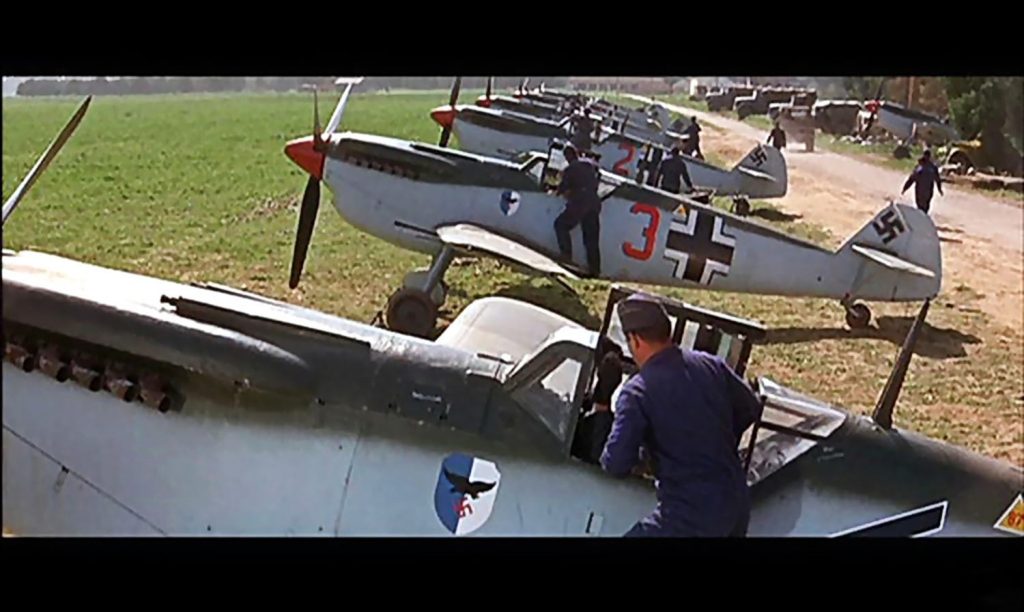
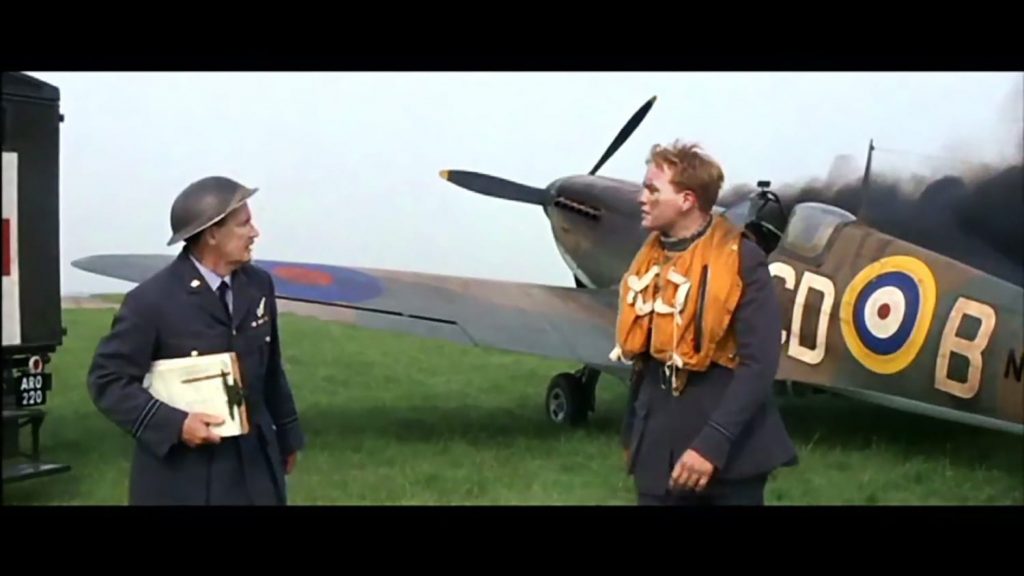
However, it should be noted somewhat critically that neither the obviously fictional emblem at the side of the “Messerschmitt” relates to a real existing Jagdgeschwader (fighter wing) of the period, nor does the code »CD« on the fuselage of the Spitfire correspond to any Royal Air Force squadron. Regarding the code please compare the following link: https://en.wikipedia.org/wiki/List_of_RAF_squadron_codes
»Memphis Belle«
Director: Michael Caton-Jones, released in 1990
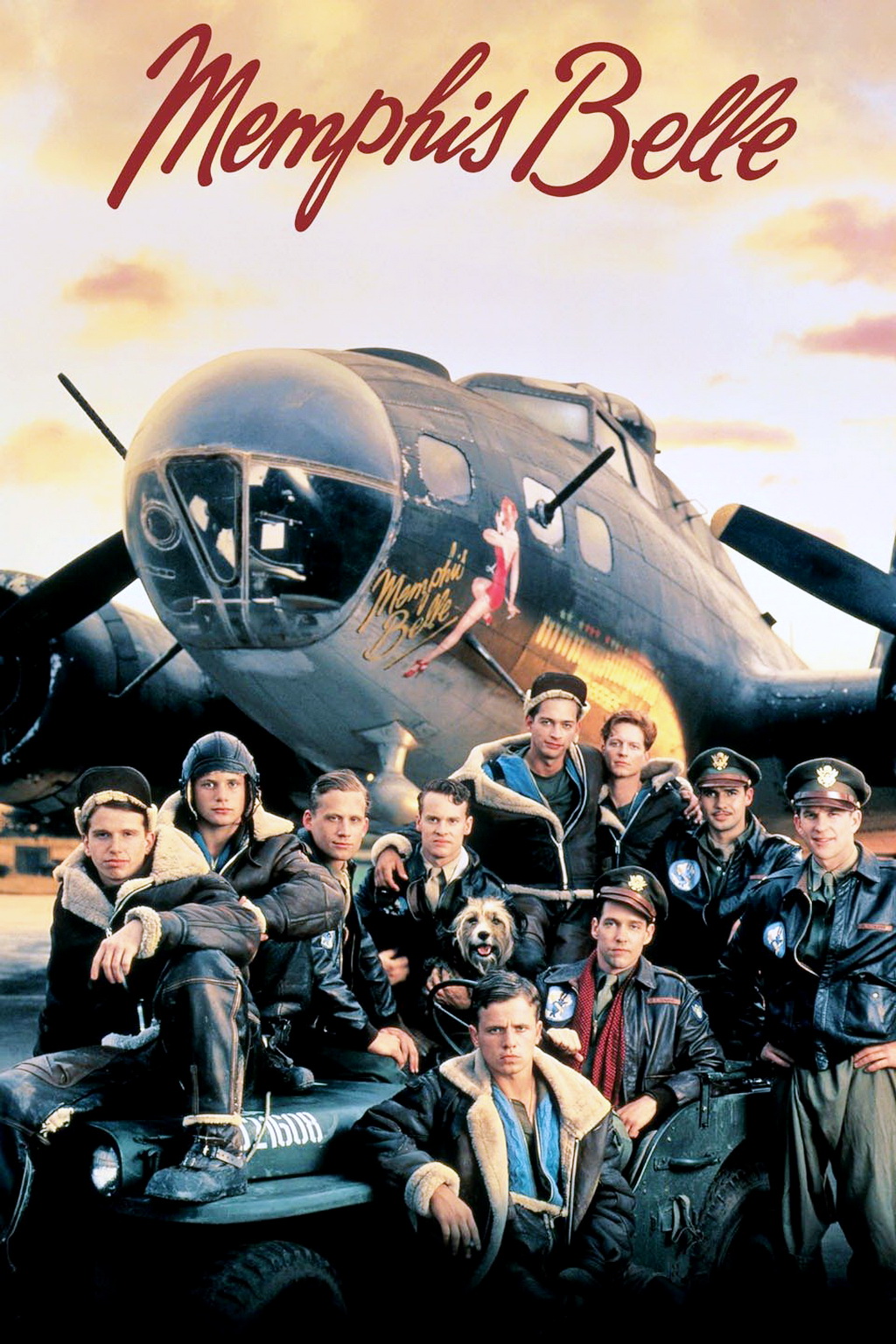
Again this is a movie demonstrating a substantial degree of accuracy. Nevertheless, the director took the liberty of some historical inconsistencies, obviously for dramaturgical reasons.
The Boeing B-17 F-10-BO serial number 41-24485 of 324th Bomb Squadron/91st Bomb Group wearing her nickname „Memphis Belle“ was a real existing aircraft. It participated in the following missions:
- 07 November 1942 – Submarine bunker near Brest, France
- 09 November 1942 – Submarine bunker near St. Nazaire, France
- 17 November 1942 – Submarine bunker near St. Nazaire, France
- 06 December 1942 – Locomotive factory near Lille, France
- 20 December 1942 – Airfield near Romilly-sur-Seine, France
- 30 December 1942 – Submarine bunker near Lorient, France (flown by Lt. James A. Verinis)
- 03 January 1943 – Submarine bunker near St. Nazaire, France
- 13 January 1943 – Marshalling yard near Lille, France
- 23 January 1943 – Submarine bunker near Lorient, France
- 14 February 1943 – Railway centre near Hamm, Germany
- 16 February 1943 – Submarine bunker near St. Nazaire, France
- 06 March 1943 – Submarine bunker near Lorient, France
- 12 March 1943 – Railway station near Rouen, France
- 13 March 1943 – Airfield near Abbeville, France
- 22 March 1943 – Naval base near Wilhelmshaven, Germany
- 28 March 1943 – Railway centre near Rouen, France
- 31 March 1943 – Harbour Rotterdam, Netherlands
- 16 April 1943 – Submarine bunker near Lorient, France
- 17 April 1943 – Aircraft factory near (Focke Wulf) Bremen, Germany
- 01 May 1943 – Submarine bunker near St. Nazaire, France
- 13 May 1943 – Aircraft factory near Méaulte, France (flown by Lt. C.L. Anderson)
- 14 May 1943 – Harbour Kiel, Germany (flown by Lt. John H. Miller)
- 15 May 1943 – Naval installations and airfields Helgoland, Germany (planned was Wilhelmshaven, Germany)
- 17 May 1943 – Submarine bunker near Lorient, France
- 19 May 1943 – Engine factory in Kiel, Germany (flown by Lt. Anderson)
The attack against the Focke-Wulf aircraft works in Bremen as described in the movie was therefore not the 25th and thus final mission of the crew, as depicted in the film, but only their 19th sortie.
Once again–similar to the movie “Battle of Britain”– this movie had to be made without today’s trick technology, using original aeroplanes. During the shootings the well-known German pilot Walter Eichhorn flew one of the fighter planes shown in the movie and told the author personally about the partially hazardous filming of the scenes. It required an extraordinary flying skill and had been rather perilous due to the danger of collision, especially during those head-on attacks (please compare the following screenshot. It shows four P-51 D Mustangs, distinguishable by the white stripes on their wings, which encounter incoming Messerschmitt Bf 109s in a frontal attack.). The aerial battle scenes were filmed out of a twin-engined North American B-25.
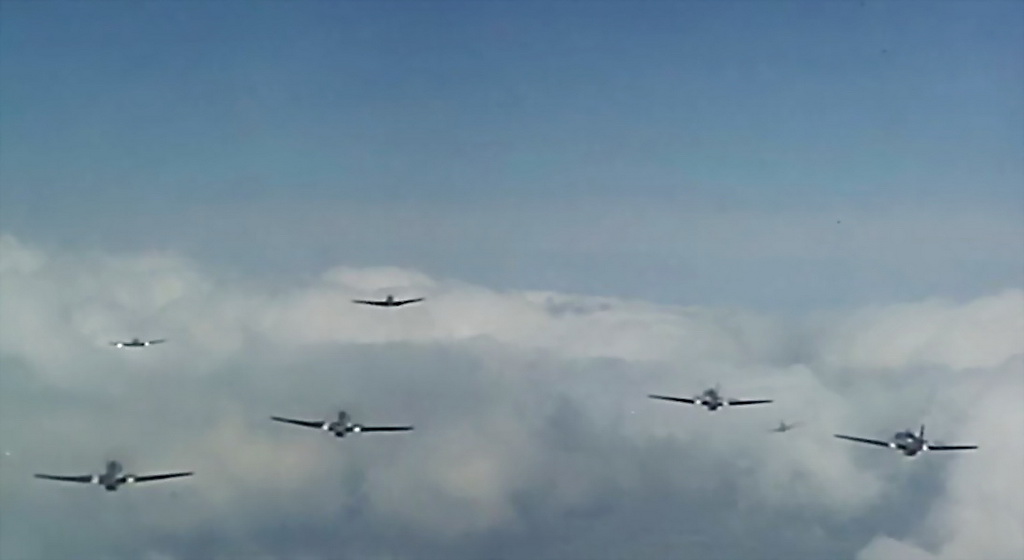
The following errors occur:
- The movie allegedly shows the 25th and last sortie of the mentioned Boeing B-17 against the Focke-Wulf plants in Bremen. This raid is described in detail from page 264 on in the author’s book. But it took place on 17th April 1943 and was by no means the last mission flown by the “Memphis Belle”.
- Furthermore, the “Memphis Belle” was not the first B-17 whose crew survived 25 missions. This record appertains to B-17 F-25-BO N° 41-24577 „Hell’s Angels“ of 358th Bomb Squadron/303rd Bomb Group under command of Captain Irl Baldwin, whose men had luckily fulfilled their duty on 13th May 1943.
- Indeed the “Memphis Belle” was badly crippled several times during her flying career. Actually there was a mission when a large part of her tail unit was shot off, as is shown in the movie. However, this was her 9th sortie on 23rd January 1943 against the German U-Boot installations in Lorient, France. This was neither her last mission against Kiel, Germany, on 19th May 1943 nor the attack against Bremen on 17th April 1943, which the aircraft survived undamaged.
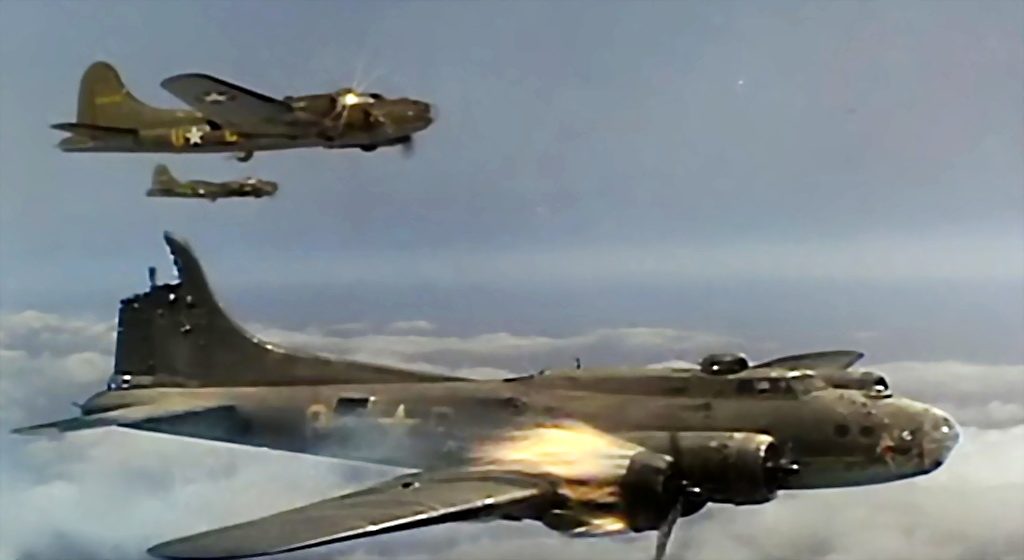
Once again as a substitute for real German Messerschmitt Bf 109 G-1/G-2s, Spanish Ha-1112 “Buchon”s had to be used. Anyway, due to the swiftness of the movie battle scenes this is hardly perceptible. Therefore, one must pay tribute to the camera work. The following screenshot proves it, though:
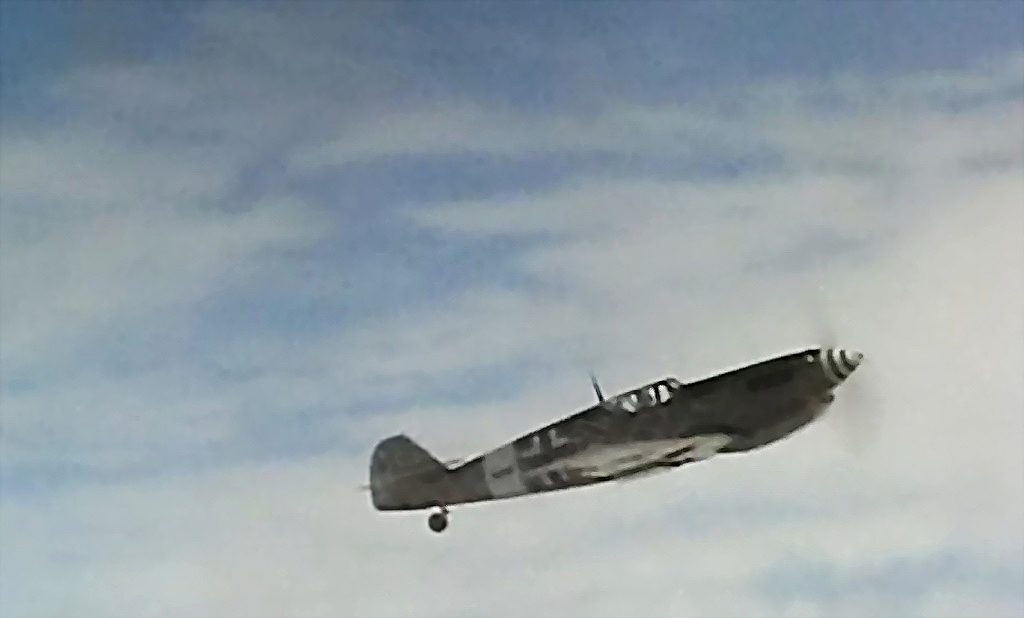
Nevertheless, a skilled eye is quite easily able to perceive that often enough pairs of German fighter aircraft sweep through the bomber formations in which the foremost aircraft is recognisable as a Messerschmitt Bf 109, while the following one is clearly a P-51 D Mustang. As those battle scenes certainly do not depict any pursuing action (P-51 D hunts a Bf 109, which in principle would have been possible), the second fighter aircraft is meant to feign a Messerschmitt. A hopeless task as a Mustang’s shape is easy to distinguish.
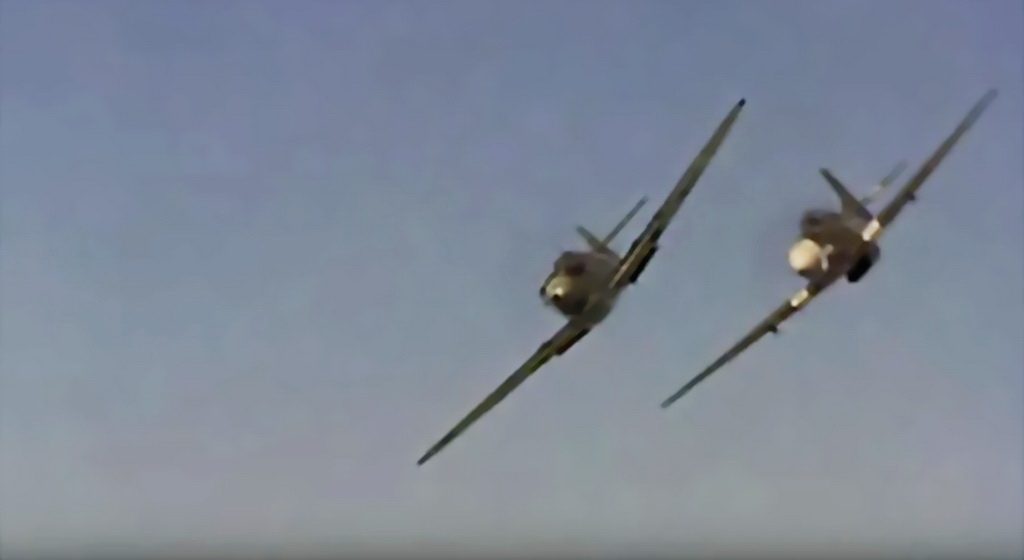
But the most severe error in historical terms is to even show North American P-51 D Mustang escort fighters. This US fighter aircraft was not available before the year 1944, the used version »D« not even until May 1944 onwards. This is a complete year after the alleged mission of “Memphis Belle” in April 1943. At this early stage of the air war the US bombers were mainly escorted by British Supermarine Spitfires whose range, however, was only capable of reaching Antwerp at best.

»Pearl Harbor«
Director: Michael Bay, published in 2001
In this spectacular cinema movie the eponymous hero, the US fighter pilot Captain Rafe McCawley, volunteers for combat at the beginning of the year 1941 to the “Eagle Squadron” of the British Royal Air Force (RAF), which was built up by Americans. Indeed there were three “Eagle Squadrons” in the RAF.
The first “Eagle-Squadron” was 71 Squadron, code »XR«, operational from 5th February 1941 onwards.
According to Wikipedia 71 Squadron was equipped with the following aircraft types:
| Nov 1940 – May 1941 | Hawker Hurricane | Mk.I |
| Apr 1941 – Aug 1941 | Hawker Hurricane | Mk.IIB |
| Aug 1941 – Sep 1941 | Supermarine Spitfire | Mk.IIA |
| Sep 1941 – Sep 1942 | Supermarine Spitfire | Mk.Vb |
The second “Eagle-Squadron” was 121 Squadron, code »AV«, operational from 14th May 1941 onwards.
According to Wikipedia 121 Squadron was equipped with the following aircraft types:
| May 1941 – Jul 1941 | Hawker Hurricane | Mk.I |
| Jul 1941 – Nov 1941 | Hawker Hurricane | Mk.IIb |
| Oct 1941 – Nov 1941 | Supermarine Spitfire | Mk.IIa |
| Nov 1941 – Sep 1942 | Supermarine Spitfire | Mk.Vb |
The third “Eagle-Squadron” was 133 Squadron, code »MD«, operational from July 1941 onwards.
According to Wikipedia 133 Squadron was equipped with the following aircraft types:
| Jul 1941 – Oct 1941 | Hawker Hurricane | Mk.IIb |
| Oct 1941 – 1942 | Supermarine Spitfire | MK.IIa |
| 1942 – 1942 (early) | Supermarine Spitfire | MK.Va/Vb |
| 1942 – 1942 (later) | Supermarine Spitfire | MK.IX |
So what about historical precision regarding details in this movie? The period of time when eponymous hero Captain Rafe McCawley introduces himself to the alleged “Eagle Squadron” emerges from the movie. At position 0:49:06 following his assumed death after being shot down, it was apparently “July 1941”. Therefore, the eponymous hero clearly must have flown his sorties before!
Thus 133 Squadron, code »MD«, operational from July 1941 onwards, is out of the question. Alas, both other “Eagle Squadrons” were also not equipped with Supermarine Spitfires until July 1941, as is depicted in the movie. Instead they both used the fighter aircraft Hawker Hurricane at that time.
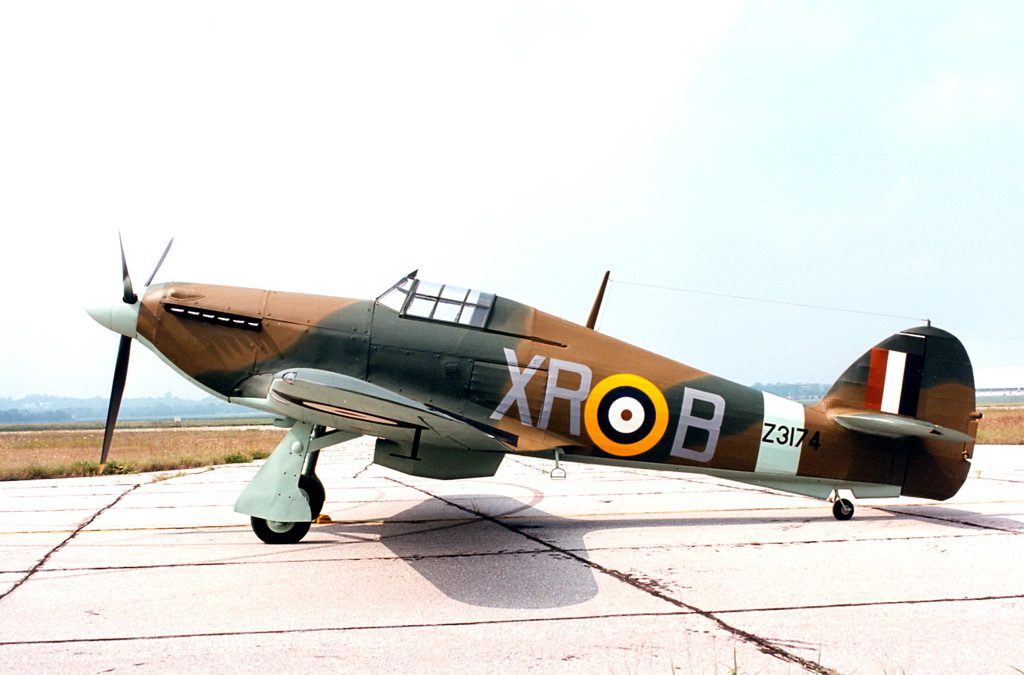
This, however, does not prevent the director from showing the eponymous hero climbing into a Spitfire. At the time in question there were indeed RAF squadrons equipped with Spitfires, but not the “Eagle Squadrons”. In fact, the most widely used subtype of the Spitfire in the spring of 1941 was the Mk.II.

As can be clearly seen, this type MK.II uses a three-blade propeller and is armed with eight machine-guns, which is indicated by the eight red square fields on the wings. It is not armed with any cannons, apart from the rather seldom produced version Mk.IIb!
This changed with the Spitfire Mk.V, which was predominantly produced as version Vb. This type was armed with two cannons and four machine-guns. The Spitfire Mk.Vs were delivered from February 1941 onwards. Therefore, this type would in principle be plausible during the time period in question regarding the missions flown by Captain Rafe McCawley, albeit by far not as likely as a Spitfire type Mk.IIa. The Spitfire Mk.Vb is easily distinguishable from the Spitfire Mk.IIa (although not so clearly from the much more seldom used version Mk.IIb) by the two cannons.
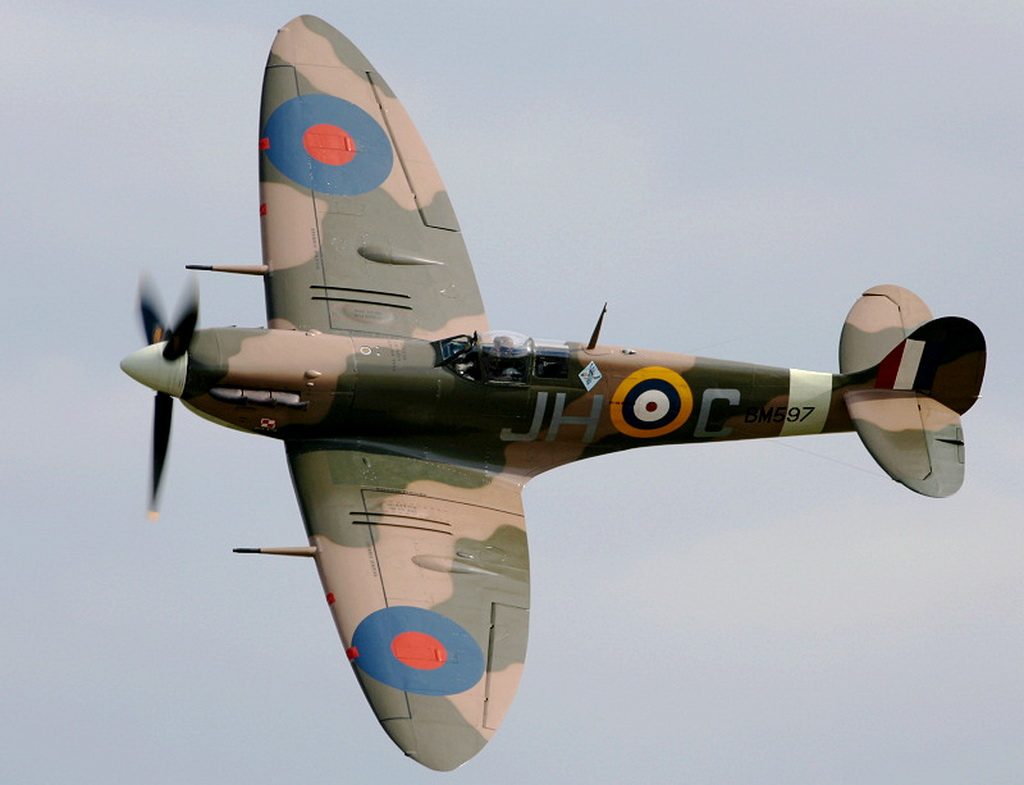
This version of the Spitfire was again equipped with a three-blade propeller, which allows a distinct differentiation from the Spitfire Mk.IX below, which was used from July 1942 onwards.
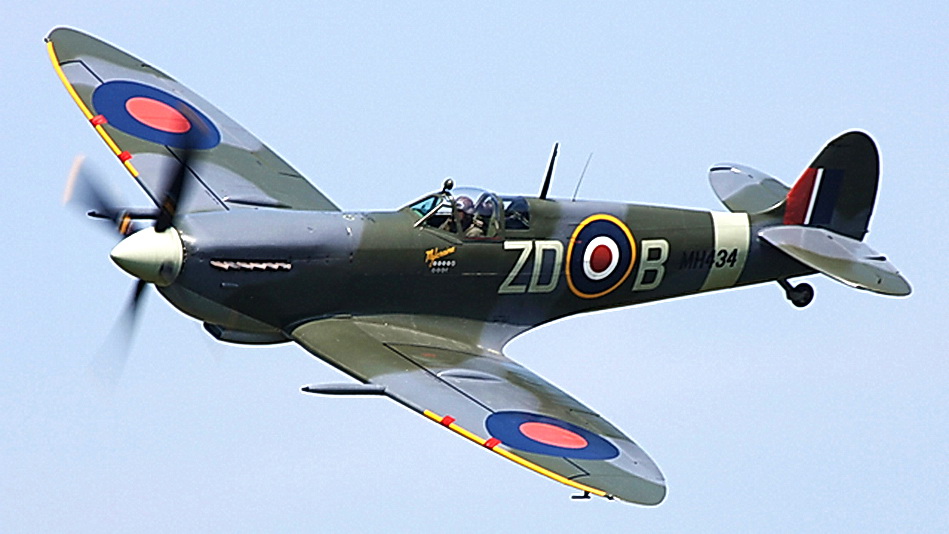
Now, what do we see in the Hollywood-movie?
- The depicted aircraft are Spitfire Mk.IXs equipped with four-blade propellers. Those types were not even available in the middle of the year 1941.
- Even the rather similar Spitfire Mk.Vbs, which with their three-blade propellers were not really distinguishable in air battles, would in principle have been possible at that time, but fairly unlikely.
- At any rate all the “Eagle Squadrons” of the period in question were still equipped with Hawker Hurricanes.
- The Spitfire aircraft depicted in the movie show the code “RF” on their fuselage. This code belongs to 303 Squadron RAF, consisting of Polish volunteers, and not at all to one of the “Eagle Squadrons”, to which Rafe McCawley allegedly introduces himself. As his native language is American English, one could have had the idea of putting him into an English squadron of the Royal Air Force. But into a Polish squadron of all things? Who had masterminded this?
- And if that was not enough, two of the aircraft bear the same individual code “M“, which is completely impossible. An individual code strictly exists only once in a squadron or Staffel!
- Furthermore, those Spitfires meet Messerschmitt Bf 109s subtype “E” in the movie combat scenes. One must appreciate that the Messerschmitts are extremely cleverly filmed. Thus they seem correct in optical terms and you cannot discover them to be Ha-1112s, even if those in fact should have been used for the shooting work and not “true” Bf 109 E. But regrettably, even the “Me 109 E” is wrong from a historical point of view because the Luftwaffe long since had their fighter wings reequipped with the successor model Messerschmitt Bf 109 subtype “F” in the spring of 1941.
The author does not wish to be regarded as conceited. But he allows himself the comment that all those details are easy to investigate, especially today in the age of internet, Wikipedia (even if this is not correct in every point) and Google.
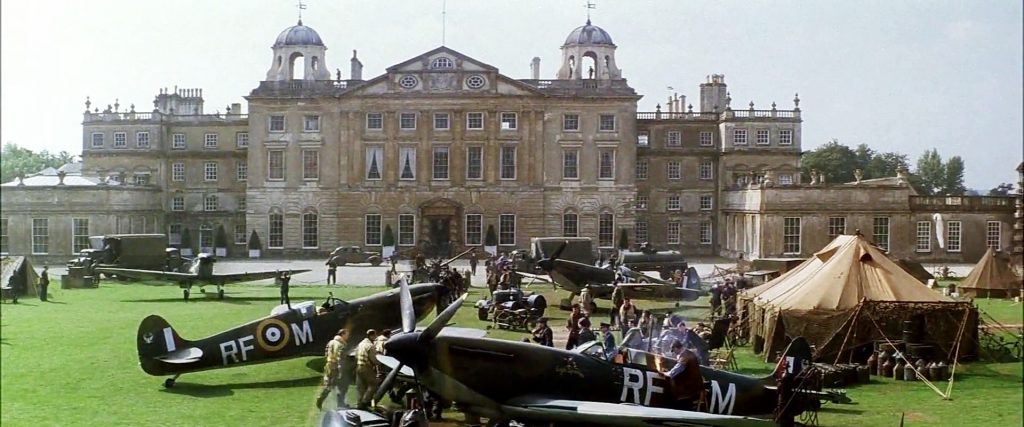
Movie-Scenes
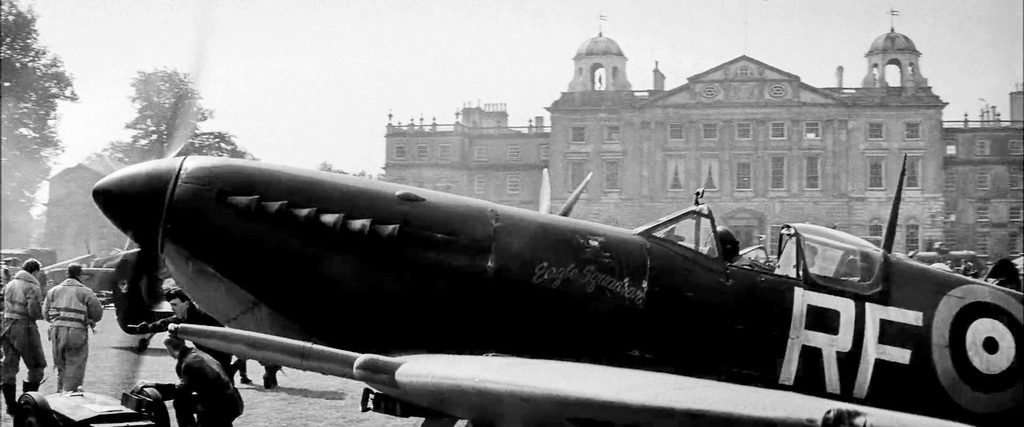
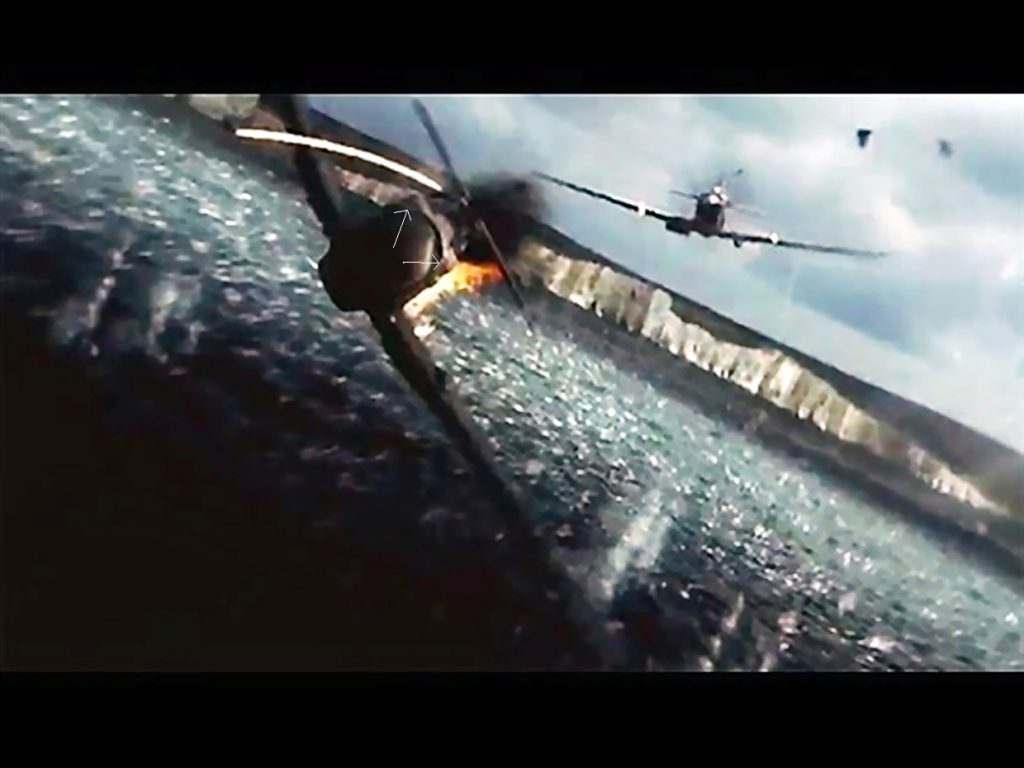
Please note the two arrows, which point to two bulges on the fuselage. Those are typical for the Spanish Ha-1112 but do not exist in the case of the Messerschmitt Bf 109.
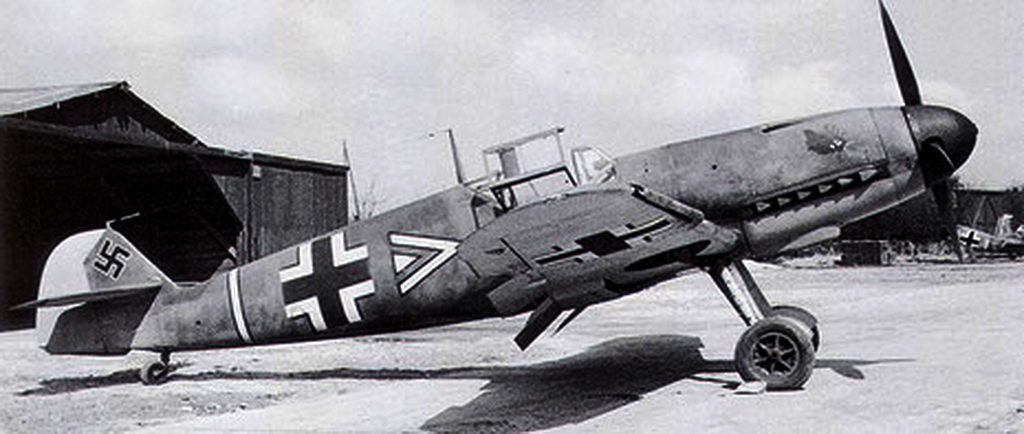
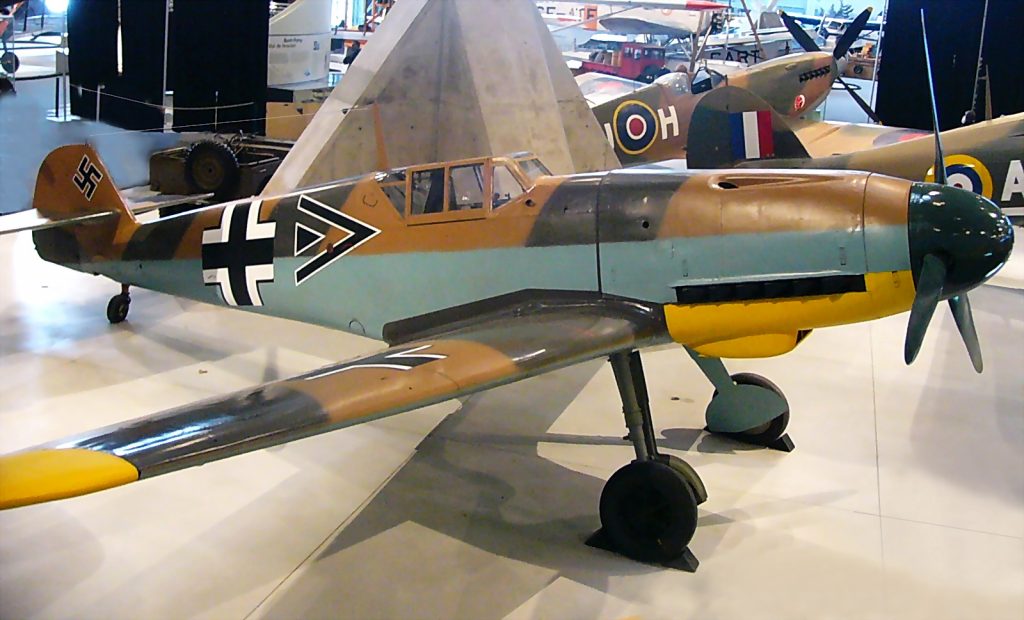

Here a perfect comparison between a “fake-Bf-109” (Spanish HA-1112 “Buchon”, above) and the sleek real Messerschmitt Bf 109 G-2 (below), which looks rather similar to a F-4.
»Dunkirk«
Director Christopher Nolan, published in 2017
Now then. Again, in spite of the availability of modern visual effect techniques and in the meantime an airworthy original Messerschmitt Bf 109 E-3 existing in the United States, the director cannot avoid relying on the use of this “teratism” …
United States
Airworthy
- Bf 109 E-3 1342 (N342FH), ex-6./JG 51 “Yellow 8” (Pilot: Eduard Hemmerling) – crashed: 29 July 1940, Yellow 8 , Flying Heritage Collection, Everett, Washington.[81]
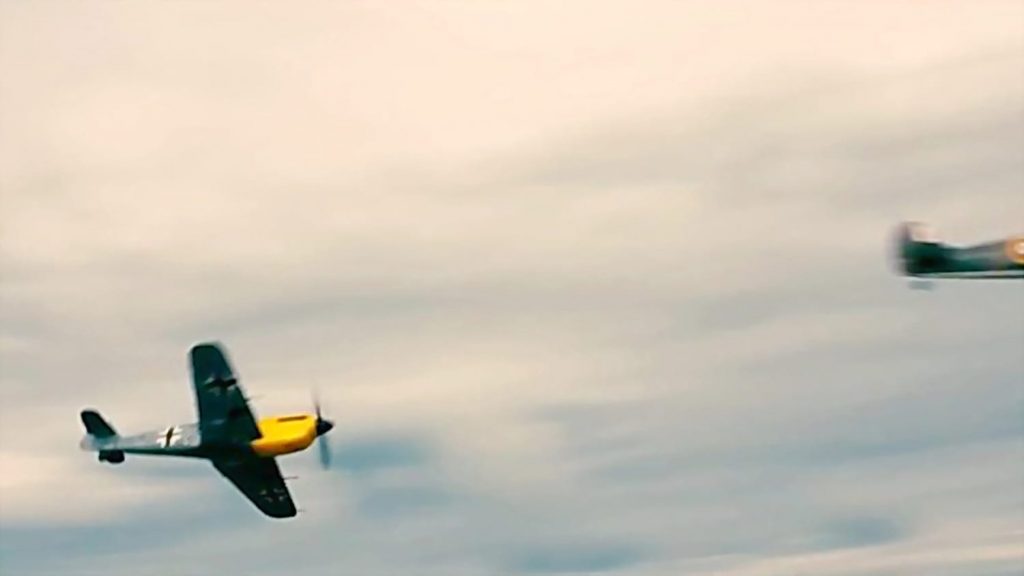

- Once more the movie aerial battle scenes were showcased to perfection, and due to the panache of the moving aircraft a very skilled eye is needed to discover the difference between the used Spanish variants and the feigned Messerschmitt fighters.
- Nevertheless the choice of the RAF markings painted on the fuselage sides of the Supermarine Spitfires is hardly understandable. Those Spitfires at least correlate with the historically correct variant, namely Mark Is.
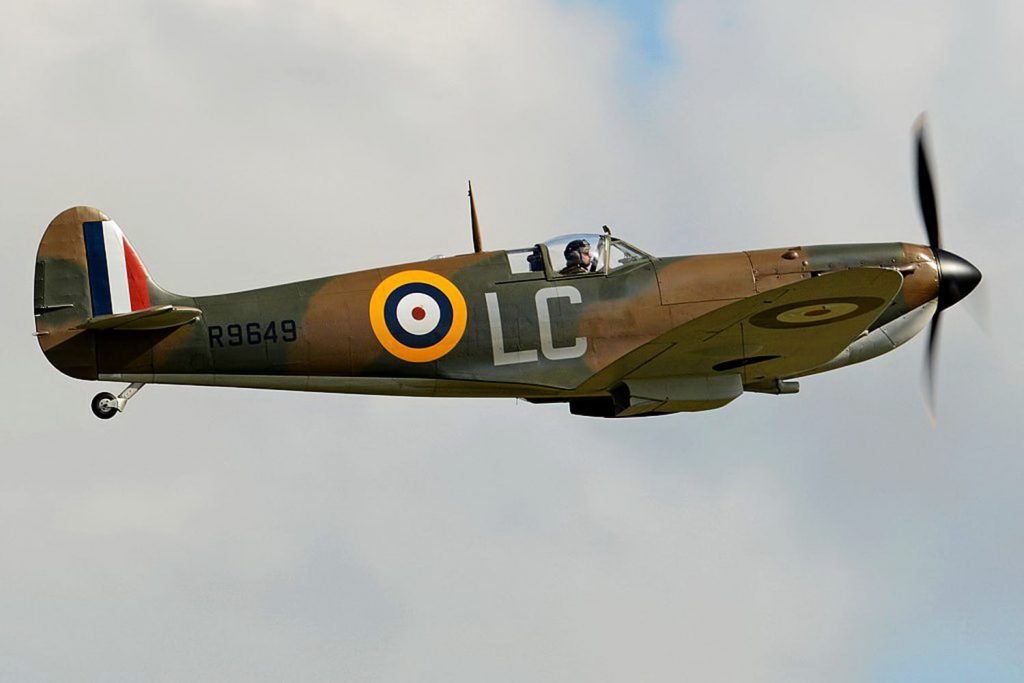
But neither the serial number nor the Code “LC” can be related to any real aircraft. This code belongs to an airfield guard section of the bomber (!) field RAF Feltwell, whose aircraft certainly never ever appeared over Dunkirk …
- The dogfights above Dunkirk and the channel were in no way skirmishes between single aircraft, as the movie wrongly shows. A solitary Heinkel He 111 never attacked a ship alone. There were air battles often consisting of several hundred aircraft simultaneously. A total of 32 Royal Air Force squadrons rotated in forty-minute shifts, flying out from southern Britain and circling the skies above the beaches, densely packed with battle-weary, desperate soldiers. The air battles over Dunkirk were fought with an unparalleled intensity. Although the Royal Air Force could at no point attain air supremacy, for the first time they had dented the reputation of the Luftwaffe as an invincible force. The II. Fliegerkorps had already incurred greater losses on the first day of the battle of Dunkirk than in the previous ten days of the French campaign together. The Royal Air Force in turn lost 177 fighter aircraft in that time as they attempted to give support to their ground troops. The Germans lost a total of 134 aircraft above the beaches of Dunkirk.
- This leads to another bias of the movie – typical Hollywood style! Watching the movie it seems that considerably more Messerschmitts crash into the channel water than Spitfires. It’s a pity, if the screenwriter cannot handle the truth.
- Then the movie shows a long queue of British soldiers on a pier waiting for embarkment. A single pass during a ground attack in the pier’s longitudinal direction with blazing cannons and guns, then almost none of those men would have survived. No, in fact German bombers had made a good job of completely destroying all the port facilities of Dunkirk. The larger ships therefore had to anchor off the beach, while the smaller boats restlessly shuffled back and forth, day and night, between the beach and the larger boats. Most of the British and French soldiers were rescued during those four days when a ridge of low pressure prevented the Luftwaffe from flying any missions. And during the night.
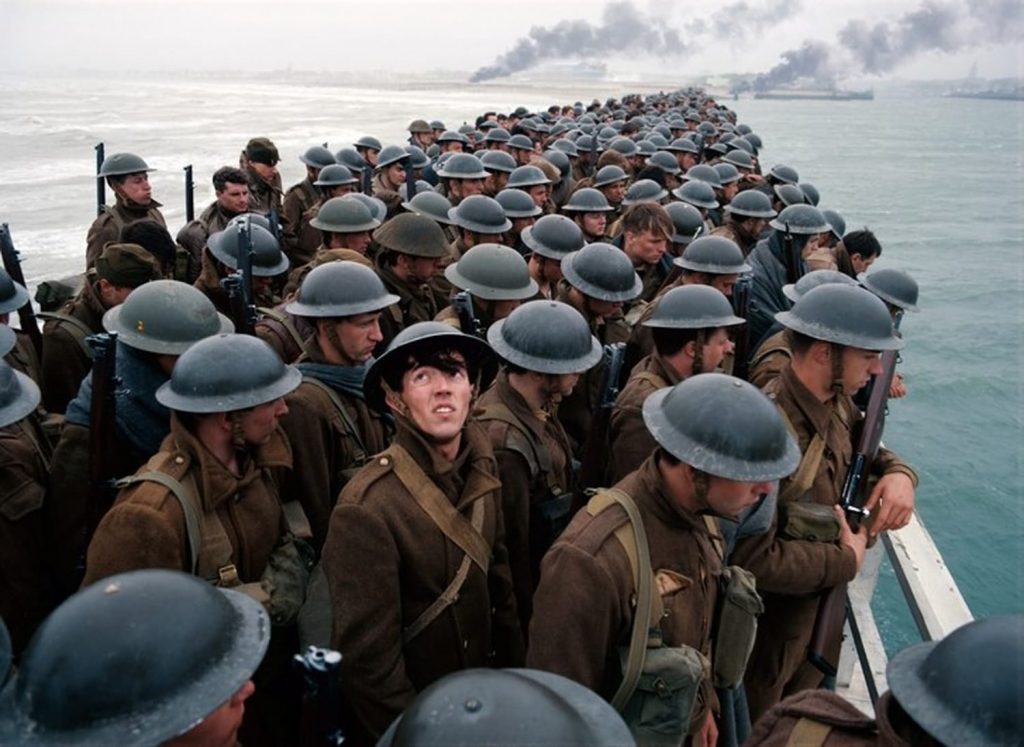
- And last but not least: a Supermarine Spitfire is no glider! The last air scene of the movie shows a Spitfire out of fuel but even then destroying a German Heinkel He 111 bomber and afterwards gliding alongside the beach for a seemingly endless time. That’s ridiculous. The pilot would have had to bail out or land immediately after his engine had failed. And if he had decided to land, he would have had to manage a forced landing – without touching the landing gear lever. To use the landing gear on the always wet sand of a tidal beach, as the movie depicts, would have been a suicidal decision. The aircraft would have somersaulted immediately after touching the ground.
But regarding all this stuff I have no other option than to give Hollywood some smiling and not too serious advice in poetic form:
If your movie shall be free
of bungling, bricolage and flub,
then read my book and you will see,
your credibility will go up …
Ebenfalls interessant…

The final kill of the ace of aces, Erich Hartmann, the most successful fighter pilot of all time
Dangerous encounter in the airIn March 1945 a Russian bombing attack on Prague was reported. Hartmann took off with four Me 109s. A Russian formation…
Weiterlesen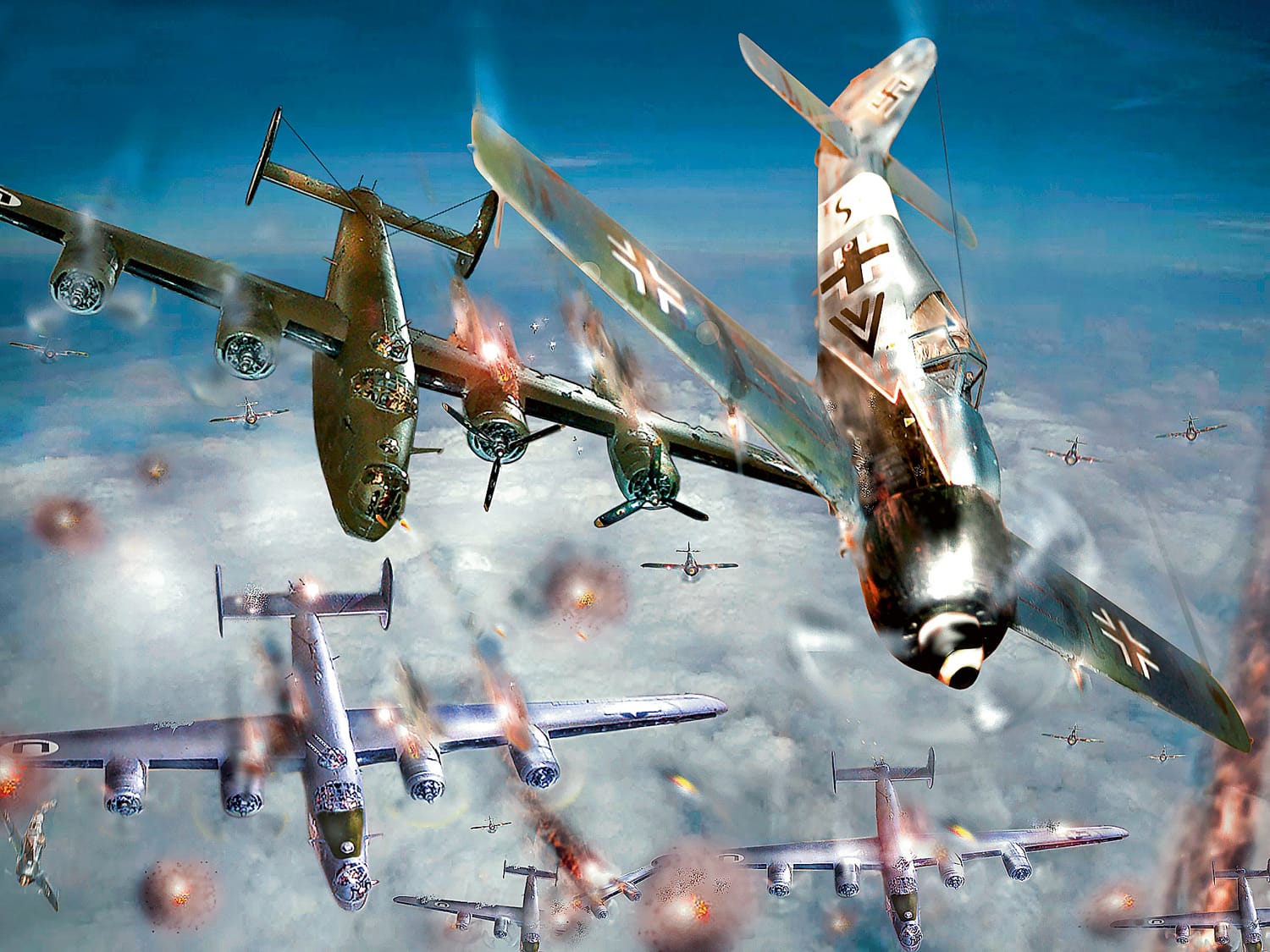
Sturmjäger – cuirassiers of the air
Air battle over Germany: the attack on hydrogenation plants and aircraft factoriesIn the early hours of the morning of 7th July 1944 756 B-17 Flying…
Weiterlesen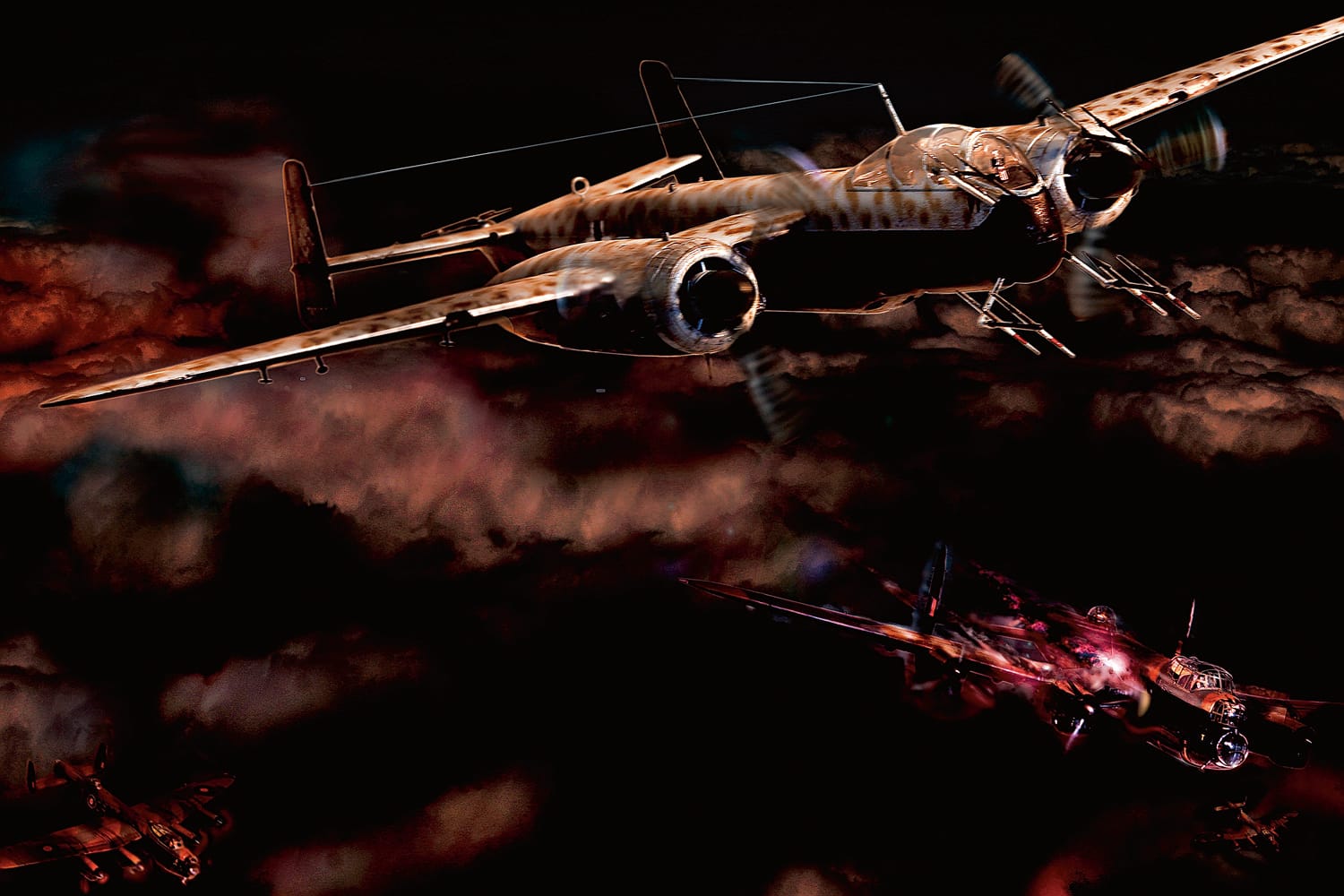
The night fighter He 219 “eagle owl” – the misjudged genius
In the year 1943 Germany was under pressure on all fronts, even on the so-called home front. Air Chief Marshal Arthur Harris, Commander-in-Chief of the…
Weiterlesen